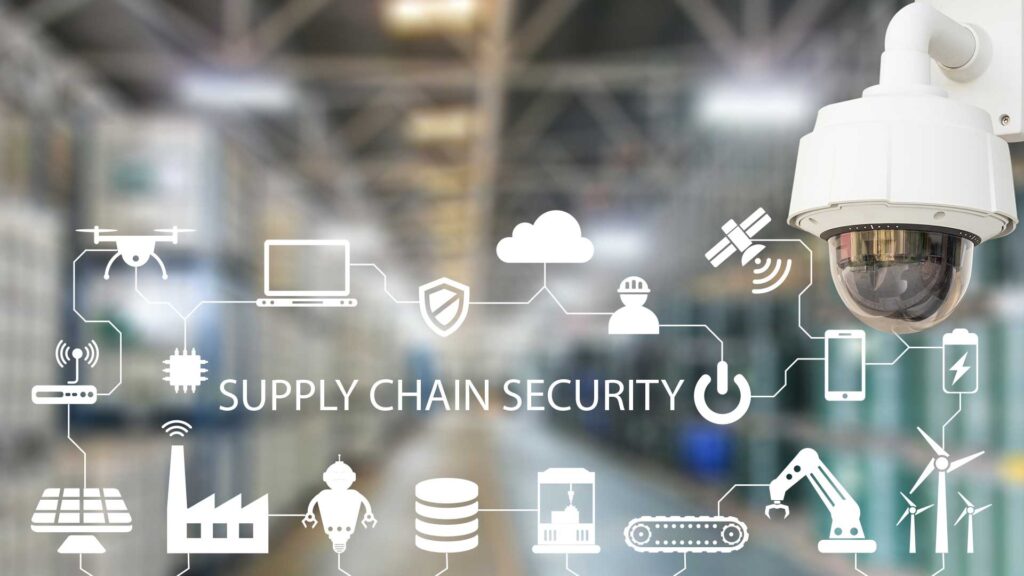Supply Chain Cybersecurity: Protecting the Digital Ecosystem
In an era dominated by digital technologies and global interconnectivity, the imperative of robust cybersecurity measures within the supply chain cannot be overstated. The buzzwords Supply Chain Cybersecurity and Cybersecurity Supply Chain encapsulate the essence of safeguarding the intricate digital ecosystem that underpins the production and delivery of goods and services. In this blog, we delve into the critical role of supply chain cybersecurity, the challenges it poses, and effective strategies to fortify the digital network spanning suppliers, manufacturers, distributors, and retailers.

Understanding Supply Chain Cybersecurity
Supply Chain Cybersecurity is a comprehensive set of practices designed to secure the vast network of organizations involved in the supply chain. This digital ecosystem, denoted by the term Cybersecurity Supply Chain, encompasses not only the flow of physical goods but also the intricate web of information systems, data, and communication channels. It is the protection of this interconnected chain that becomes paramount to ensuring the integrity, confidentiality, and resilience of the entire supply network.
Challenges in Supply Chain Cybersecurity
- Interconnectedness: The supply chain is a complex web where the compromise of one node can reverberate throughout the entire system. The key challenge is to secure every link in the chain, recognizing that a breach at any point can lead to devastating consequences.
- Third-party Risks: Many businesses rely on third-party vendors for various services, introducing additional vulnerabilities. The term Cybersecurity Supply Chain highlights the need to evaluate and secure external connections, ensuring that the cybersecurity standards align across all participants.
- Data Visibility: As data traverses the supply chain, maintaining visibility and control becomes challenging. The lack of visibility exposes the system to unauthorized access and data breaches, emphasizing the necessity of robust cybersecurity measures.
- Rapid Technological Changes: The evolving technological landscape introduces new vulnerabilities. To effectively address these challenges, supply chains must adapt swiftly, ensuring that their cybersecurity measures remain current and effective against emerging threats.
Strategies for Supply Chain Cybersecurity
- Risk Assessment and Management: Conducting a thorough risk assessment is the first step. Prioritize vulnerabilities based on their impact and likelihood, and implement risk management strategies accordingly. The highlighted keywords Supply Chain Cybersecurity underscore the importance of managing risks throughout the entire supply chain.
- Third-party Security Evaluation: Regular assessments of third-party vendors’ cybersecurity measures are crucial. Contracts should clearly define security requirements, and continuous monitoring ensures that all participants adhere to industry best practices.
- Data Encryption: The term Cybersecurity Supply Chain emphasizes the need for end-to-end encryption. This ensures that sensitive data remains secure as it traverses the supply chain, mitigating the risk of unauthorized access and interception.
- Incident Response Planning: Develop and regularly test incident response plans. This comprehensive approach ensures that the supply chain is well-prepared to respond swiftly and effectively to any cybersecurity incident.
- Continuous Monitoring: Implement real-time monitoring of the supply chain network. This involves automated tools and AI-driven solutions to detect anomalies promptly, ensuring a rapid response to potential threats.
- Employee Training: Human error is a significant factor in cybersecurity incidents. The highlighted keywords stress the importance of continuous training for employees across the supply chain, creating a workforce that is vigilant and well-informed about cybersecurity best practices.
Conclusion
In conclusion, the highlighted keywords Supply Chain Cybersecurity and Cybersecurity Supply Chain signify the holistic approach needed to secure the digital ecosystem supporting the modern supply chain. With a comprehensive understanding of the challenges and the implementation of effective strategies, businesses can fortify their digital networks, creating a secure environment for the exchange of goods and services. In the ever-evolving threat landscape, proactive measures and continuous improvement are essential to preserve the integrity of the supply chain and ensure a resilient digital ecosystem for the future.






